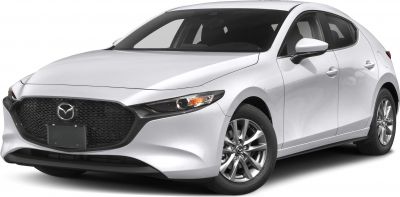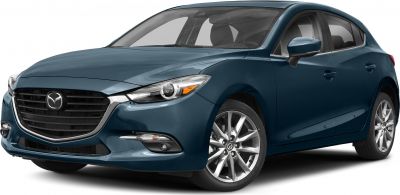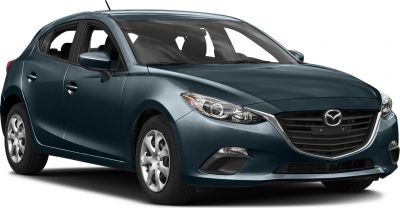 2020 Hyundai IONIQ (facelift 2019) Dimensions, Size & Specs
2020 Hyundai IONIQ (facelift 2019) Dimensions, Size & SpecsMeasurements of the 2020 Hyundai IONIQ, engineered for optimal performance and comfort
| Dimensions | |
|---|---|
| Length: | 4470 mm176.0 in14.7 ft |
| Width: | 1820 mm71.7 in6.0 ft |
| Width (Opened Mirrors): | 2045 mm80.5 in6.7 ft |
| Height: | 1450-1475 mm57.1-58.1 in4.8-4.8 ft |
| Ground Clearance: | 140-150 mm5.5-5.9 in0.5-0.5 ft |
| Trunk Capacity: | 341-443 liter12.0-15.6 cu ft |
| Trunk Capacity (Max): | 1401-1505 liter49.5-53.1 cu ft |
| Weight Specifications | |
| Curb Weight: | 1469-1527 kg3239-3366 lbs |
| Maximal permitted Weight: | 1870-1970 kg4123-4343 lbs |
| Tire Specifications | |
| Rims Sizes: | 15-inch rims:
|
| Tire Sizes: |
|
The 2020 Hyundai IONIQ facelift represents a refined and practical hatchback solution, blending eco-friendly performance with versatile dimensions suited for urban and suburban driving. Launched for the 2019 model year and continuing production into the present, this generation of the IONIQ offers a balanced size profile with a length of 4470 mm (176 inches) and a width of 1820 mm (71.7 inches). When including the opened side mirrors, the width expands to 2045 mm (80.5 inches), which is important for maneuvering and parking considerations. The height ranges between 1450 mm (57.1 inches) and 1475 mm (58.1 inches), providing a moderately low ride height that contributes to aerodynamic efficiency and sporty aesthetics. The ground clearance varies from 140 mm to 150 mm (5.5 to 5.9 inches), offering sufficient clearance for daily driving without compromising handling. Curb weight across different trims spans from 1469 kg (3237 lbs) to 1527 kg (3367 lbs), while the maximum permissible weight ranges from 1870 kg (4123 lbs) up to 1970 kg (4344 lbs), reflecting its capability to accommodate passengers and cargo safely. The Hyundai IONIQ stands out for its impressive luggage capacity, ranging from 341 liters (12 cubic feet) with all seats in use to between 1401 and 1505 liters (49.5 to 53.1 cubic feet) when rear seats are folded down, making it highly practical for both everyday errands and longer trips. The vehicle's wheel and tire options enhance both comfort and performance, with rim sizes varying from 6J x 15 inches to 7J x 17 inches and tire dimensions including 195/65 R15, 225/45 R17, 205/55 R16, and 205/60 R16. This thoughtful combination of dimensions, weight, and cargo space makes the 2020 Hyundai IONIQ facelift a versatile and efficient choice in the compact hatchback segment.
Discover the standout features that make the 2020 Hyundai IONIQ a leader in its class
Have a question? Please check our knowledgebase first.
The Hyundai IONIQ facelift 2019, available as the 2020 model year, has a length of 4470 mm (175.98 inches), a width of 1820 mm (71.65 inches) without mirrors, and a height ranging between 1450 mm and 1475 mm (57.09 to 58.07 inches). These dimensions position the IONIQ as a compact hatchback, making it practical for both urban and suburban driving while providing a roomy cabin space relative to its class.
With the side mirrors opened, the Hyundai IONIQ facelift 2019 measures 2045 mm (80.51 inches) in width. This wider measurement is important for understanding the car's real footprint on the road or when maneuvering in tight spaces such as narrow parking spots or garages. Drivers should ensure that their parking spaces or garages can accommodate this width with mirrors extended.
The curb weight of the Hyundai IONIQ facelift 2019 ranges from 1469 kg to 1527 kg (3238 to 3367 lbs), depending on configuration and trim levels. The maximum permissible gross weight is between 1870 kg and 1970 kg (4123 to 4344 lbs). These weight figures affect the vehicle's handling dynamics, fuel efficiency, and load capacity, making it a relatively lightweight and efficient electric or hybrid vehicle in its category.
The Hyundai IONIQ facelift 2019 has a luggage capacity ranging from 341 liters (12.04 cubic feet) to 443 liters (15.65 cubic feet) with the rear seats upright. When the rear seats are folded down, this expands significantly to between 1401 liters (49.46 cubic feet) and 1505 liters (53.13 cubic feet). This makes the IONIQ versatile for carrying groceries, luggage, or larger items with ease.
The ride height or ground clearance of the Hyundai IONIQ 2020 model ranges from 140 mm to 150 mm (5.5 to 5.9 inches). This relatively low clearance optimizes the car for aerodynamic efficiency and stability, especially at highway speeds, but it may limit performance on very rough or uneven terrain. It is best suited for paved roads and urban environments.
The 2020 Hyundai IONIQ facelift offers a variety of rim sizes including 6J x 15, 7J x 17, 6.5J x 17, and 6J x 16 inches. As for tires, standard sizes are 195/65 R15, 225/45 R17, 205/55 R16, and 205/60 R16. This range helps balance ride comfort, handling, and fuel efficiency depending on the trim and driving preferences.
Yes, the Hyundai IONIQ facelift 2019 typically fits into a standard single-car garage. Standard garages usually have widths starting at around 2.4 meters (7.87 feet) and lengths of about 4.8 meters (15.75 feet). With a length of 4.47 meters (14.65 feet) and width with mirrors folded at 1.82 meters (5.97 feet), the IONIQ offers enough clearance, though one should consider the width with mirrors open (2.045 meters or 6.71 feet) when maneuvering inside the garage.
Compared to the original Hyundai IONIQ launched in 2016, the 2019 facelift retained very similar exterior dimensions with subtle styling enhancements. The length remains around 4470 mm (175.98 inches), width about 1820 mm (71.65 inches), and height slightly adjusted to between 1450 mm and 1475 mm (57.09 to 58.07 inches). The facelift focused more on design tweaks and technology upgrades rather than dimensional changes, maintaining the compact hatchback footprint while improving aerodynamics and interior materials.
In the compact hybrid and electric hatchback segment, the Hyundai IONIQ facelift 2019 competes closely with models like the Toyota Prius and the Honda Insight. Dimensionally, the IONIQ is similar in length and width, with its 4470 mm length (175.98 inches) slightly shorter or comparable to the Prius. The IONIQ’s luggage space is competitive, especially with seats folded down, offering up to 1505 liters (53.13 cubic feet). It stands out with good ground clearance for its class, various powertrain options, and competitive weight for efficiency. In addition, the 2019 facelift brought styling and tech improvements to keep it contemporary in this highly competitive segment.
The Hyundai IONIQ facelift 2019 offers multiple rim sizes including 15-inch (6J x 15), 16-inch (6J x16), and 17-inch (7J x17, 6.5J x 17) options, paired with tires ranging from 195/65 R15 to 225/45 R17. Larger rims and wider tires, such as 17-inch with 225/45 tires, are generally geared toward sportier handling and improved grip but could marginally affect ride comfort and efficiency. Smaller rims and tires enhance ride comfort and contribute to better fuel economy by reducing rolling resistance. This range allows buyers to prioritize between comfort, efficiency, and sportiness based on their driving style.
Discover similar sized cars.

| Production: | 2019-present |
|---|---|
| Model Year: | 2019 |
| Length: | 4460 mm175.6 in |
| Width: | 2028 mm79.8 in |
| Height: | 1440 mm56.7 in |

| Production: | 2017-2018 |
|---|---|
| Model Year: | 2017 |
| Length: | 4460-4470 mm175.6-176.0 in |
| Width: | 2053 mm80.8 in |
| Height: | 1455-1465 mm57.3-57.7 in |

| Production: | 2013-2016 |
|---|---|
| Model Year: | 2013 |
| Length: | 4460 mm175.6 in |
| Width: | 2053 mm80.8 in |
| Height: | 1455 mm57.3 in |

| Production: | 2004-2006 |
|---|---|
| Model Year: | 2005 |
| Length: | 4400 mm173.2 in |
| Width: | 1725 mm67.9 in |
| Height: | 1395 mm54.9 in |

| Production: | 2001-2004 |
|---|---|
| Model Year: | 2002 |
| Length: | 4385-4400 mm172.6-173.2 in |
| Width: | 1695-1725 mm66.7-67.9 in |
| Height: | 1380-1400 mm54.3-55.1 in |

| Production: | 2018-2022 |
|---|---|
| Model Year: | 2018 |
| Length: | 4419-4445 mm174.0-175.0 in |
| Width: | 1992 mm78.4 in |
| Height: | 1405-1452 mm55.3-57.2 in |

| Production: | 2016-2019 |
|---|---|
| Model Year: | 2017 |
| Length: | 4470 mm176.0 in |
| Width: | 2060 mm81.1 in |
| Height: | 1450 mm57.1 in |

| Production: | 2018-present |
|---|---|
| Model Year: | 2019 |
| Length: | 4453 mm175.3 in |
| Width: | 1791 mm70.5 in |
| Height: | 1465 mm57.7 in |
